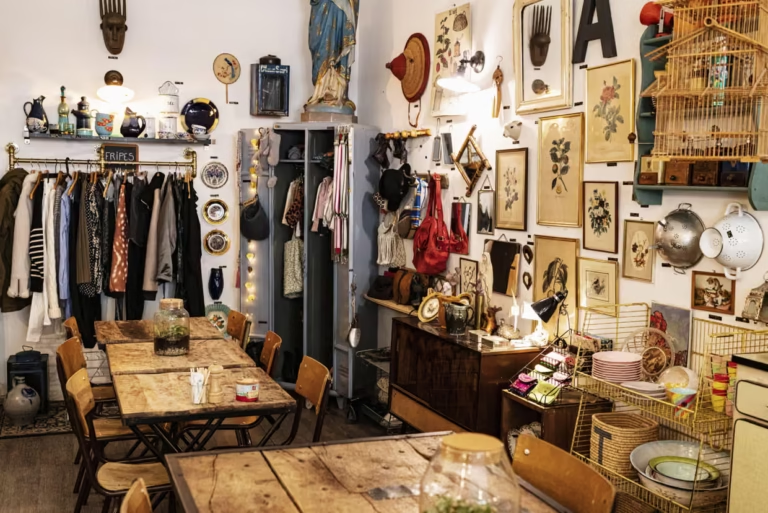Exploring new cities is no longer just about landmarks or museums. Increasingly, travelers are drawn to flea markets, vintage stores, and secondhand shops to uncover unique treasures.
In Marburg, Germany, the fairytale city famed for its hilltop castle and connections to the Grimm brothers, secondhand shopping is a hidden adventure. While the Grimm Path leads tourists past sculptures and folklore landmarks, the real excitement for bargain hunters begins at local thrift stores like SecondHand by DRK, operated by the German Red Cross.
Once stigmatized, buying secondhand has become trendy. The hashtag “thrifted” has been used more than seven million times on Instagram, and accounts dedicated to vintage finds attract tens of thousands of followers. According to Booking.com’s 2025 travel predictions, 73% of travelers have purchased secondhand items abroad. Google searches for “thrifting in Berlin” or “vintage markets in Stockholm” have surged, signaling a global trend.
For some travelers, guided tours are available. In London, Fashion Tours offers a £200 day-long tour of secondhand stores, while Red Shed Vintage Tours and Gold Crest specialize in French brocantes. But for seasoned thrifters, the thrill lies in exploring alone. Searching at your own pace allows for unexpected discoveries—from rustic homeware in France to vintage designer accessories in Madrid, or Murano glass in Venice.
Preparation is key. Research charity shops, follow vintage-focused Instagram accounts, and check websites like brocabrac.fr in France for local brocante schedules. Tools like Google Lens help determine authenticity and value. Smaller towns with aging populations, such as Kraków or Léon, often have the best bargains, while university cities may have higher prices due to competition. Exploring streets near weekend markets can also yield hidden gems.
Personal experience shows the joy of thrift shopping is as much in the hunt as the find. In Germany, an ostrich leather handbag was found for €2; in Romania, a Hermès silk scarf surfaced in a bin full of polyester; in Copenhagen, an antique rooster jug bought for 100 krone (£12) turned out to be a rare 1930s collectible. Secondhand items often become cherished souvenirs, like vintage stoneware escargot dishes from Biarritz that now hold rings on a dresser.
The interactions at flea markets enhance the experience. Stallholders in small shops or markets are often lively and engaging, creating memorable exchanges. From humorous moments in Nantes to discovering quirky mustard pots in Copenhagen, these encounters are part of the adventure.
Packing considerations are important. Items like coats, boots, and small antiques can travel easily, but larger furniture or ornate pieces often require shipping or a driving holiday to transport. Even so, the thrill of finding that perfect item—whether for oneself or as a thoughtful gift—makes the effort worthwhile.
At the Marburg DRK store, a recent find for an Australian friend—a vibrant green silk blouse in the perfect size—demonstrates that thrifting isn’t just eco-friendly and fun, it also fosters connections across continents. Flea market shopping abroad offers not only unique treasures but a way to engage with local culture and meet fellow enthusiasts.







